Through "ADAS are so popular, you still don't know about millimeter wave radar? " We have learned that the millimeter wave radar will be the first to become the main sensor of the ADAS system. However, the radar can't do anything to identify non-metallic obstacles such as pedestrians, but the camera can better identify the signs, pedestrians and other information on the road. Next, let's take a look at another important sensor in ADAS - the car camera and the car panoramic impact system.
According to the relevant agencies, the global market size of in-vehicle cameras in 2015 will reach 1.833 billion US dollars, the domestic car camera production capacity will be 25 million, and the compound annual growth rate of 2015 to 2020 will exceed 30%, and the autonomous driving technology is expected to mature in 2020. The space is expected to expand further.
The importance of car camera for autonomous drivingADAS system solutions include camera solutions, radar/lidar solutions, and sensor fusion. At the beginning of the market development, radar/lidar solutions are the mainstream of the market due to the maturity of radar technology and the weather conditions. However, with the development of ASIC (Application Specific Integrated Circuit) and the improvement of image processing algorithms, and because radar technology has a high accuracy in distinguishing metal obstacles, it is incapable of identifying non-metallic obstacles such as pedestrians, and cannot be accurately identified. Vehicles coming from the side, and can't distinguish lanes, debris or road pits.
The camera's visual processing technology can better distinguish the signs on the road, pedestrians and other information, and can also calculate the action trajectory of pedestrians and vehicles through algorithms. Compared with radar technology, the cost is lower, the function is more comprehensive, and the accuracy is higher. The technology based on camera imaging is gradually accepted by mainstream manufacturers. Considering the limitations of the camera's pixels on image recognition technology and the reduction of functions in extreme cases such as foggy and rainy days, camera-based sensor fusion will become the mainstream.
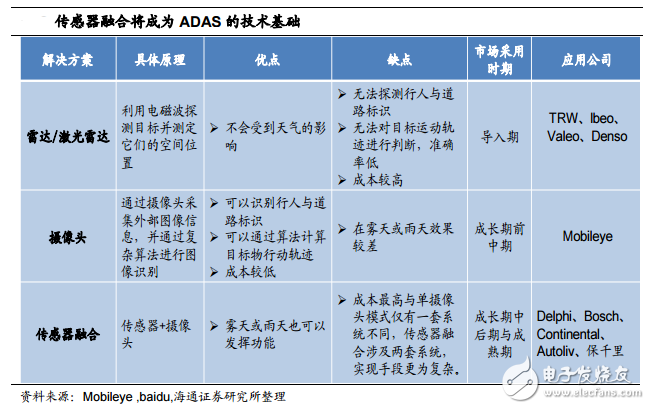
Sensor fusion will become the technical foundation of ADAS
From the bottom up, the car networking architecture is the sensing layer, the network layer and the application layer, which serve as information collection, transmission and processing functions respectively. Video capture storage (sensing layer) as the underlying architecture of the car network, the main technologies are car DVR and car IP Camera. Car DVR, commonly known as car video recorder, is based on digital video compression storage and 3G wireless transmission technology, including GPS, car black box, CANbus bus, G-SENSOR and other technologies.
The vehicle IP camera is based on digital signal processing technology (DSP) and network technology. The CMOS image sensor converts the optical signal of the scene into an electrical signal. These electrical signals are converted into digital signals and transmitted to the DSP memory through the data interface to complete image compression and encoding. At the same time, the data stream is sent to a hard disk or other storage device for storage. Compared to traditional analog systems and DVRs in terms of distance, scalability and cost.
The vehicle camera has a wide range of application space, and can be divided into driving assistance (driving recorder, ADAS and active safety system), parking assistance (full vehicle viewing) and in-vehicle personnel monitoring (face recognition technology) according to the application field. Driving to the entire parking process, so there is a high demand for camera working time and temperature. According to the installation position, it can be divided into four parts: front view, rear view, side view and interior monitoring.
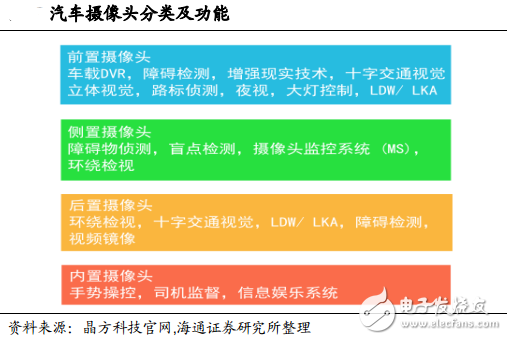
Car camera classification and function
Why choose CMOS technology for car camera?Since the car camera is so important, what are the requirements for technology and craftsmanship? For automotive applications, the car camera is the same as the mobile phone camera, mainly using CMOS instead of CCD as the optical sensor. The main reasons are three:
First, the primary characteristics of the sensors used in active driving assistance systems are: fast speed. Especially in high-speed driving situations, the system must be able to record critical driving conditions, evaluate such conditions and initiate appropriate actions in real time. In essence, CMOS is a faster image acquisition technology—the cells in a CMOS sensor are typically actively controlled and read by three transistors, which significantly speeds up the image acquisition process. Currently, high-performance CMOS-based cameras can reach levels of approximately 5,000 frames per second.
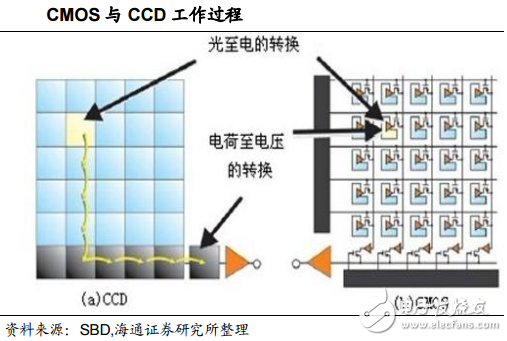
CMOS and CCD sensor working process
Second, CMOS sensors also have the advantage of digital image processing. CCD sensors typically provide analog TSC/PAL signals, and may have to be converted with an additional AD converter, or the CCD sensor should work with a progressive scan method with digital image output. Either way, letting a CCD-equipped camera provide digital image signals adds significantly to the complexity of the system; CMOS sensors can provide LVDS or digital output signals directly, and the components of the active driving assistance system can be directly and without delay. These signals are processed locally.
Moreover, in order to achieve such a goal, car camera manufacturers must consider the use of lower cost CMOS sensors. Also, when there is a strong light incident, the CMOS sensor does not generate Smear noise that occurs when the CCD is used. This will reduce the adjustment time caused by operational errors.
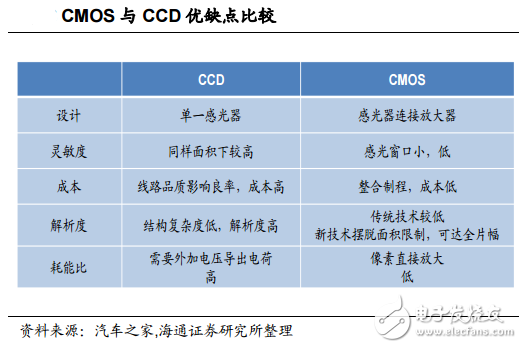
Comparison of advantages and disadvantages between COMS and CCD sensors
Xbox Series X Vertical Stand Cooling Fan
|
Design for X-box SX / SS game console and controller . Including 3 USB hubs,which can expand USB functions and easy to use
*Includes two charging docks, which can charge two X-box SX / SS controllers at the same time.
*With charging indicator function.When the indicator light is blue, it means it is fully charged or empty; if the indicator light is red, it means it is charging.
*Includes two cooling fans, 3000RPN, with a power button, which can quickly and effectively cool the x-box SX/SS game console. *The bracket can hold up to 11 game disc boxes. |
|
|
Product Name
|
Vertical Stand for Xbox Series X Game Console with 3USB BUB
|
|
weight
|
575g
|
|
Input
|
DC5V1A
|
|
Output
|
500mA
|
|
Product color
|
Black
|
|
Product size
|
20.5*4*36.3cm
|
|
OEM/ODM
|
warmly welcome
|
|
Advatage
|
100 QC test before shipping
|
|
Delivery Method
|
DHL,TNT,UPS , FEDEX ETC
|
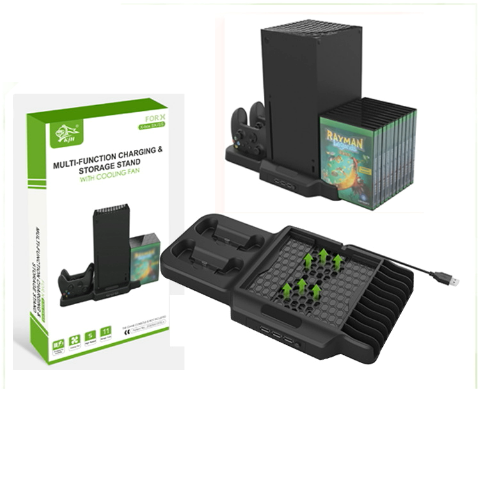
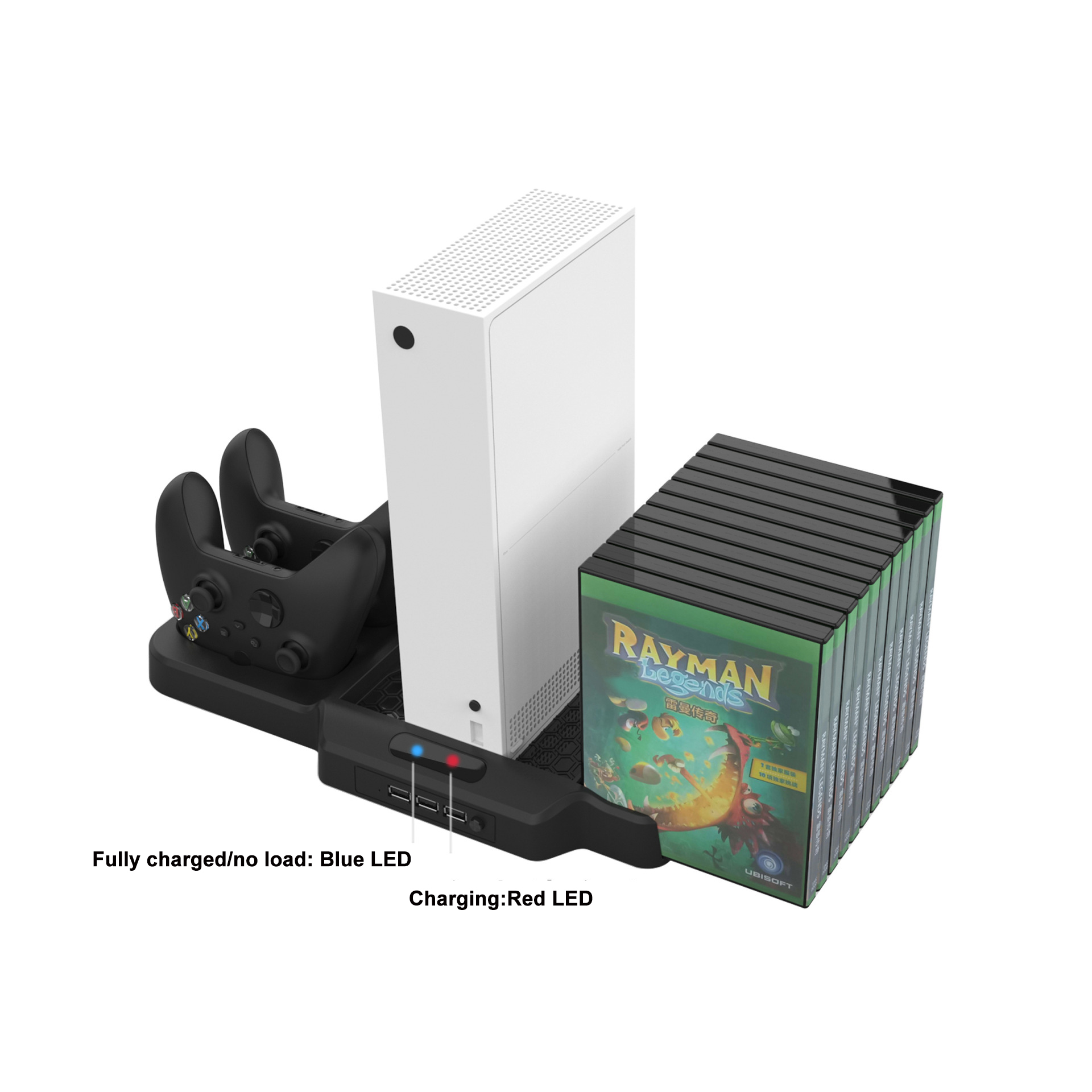
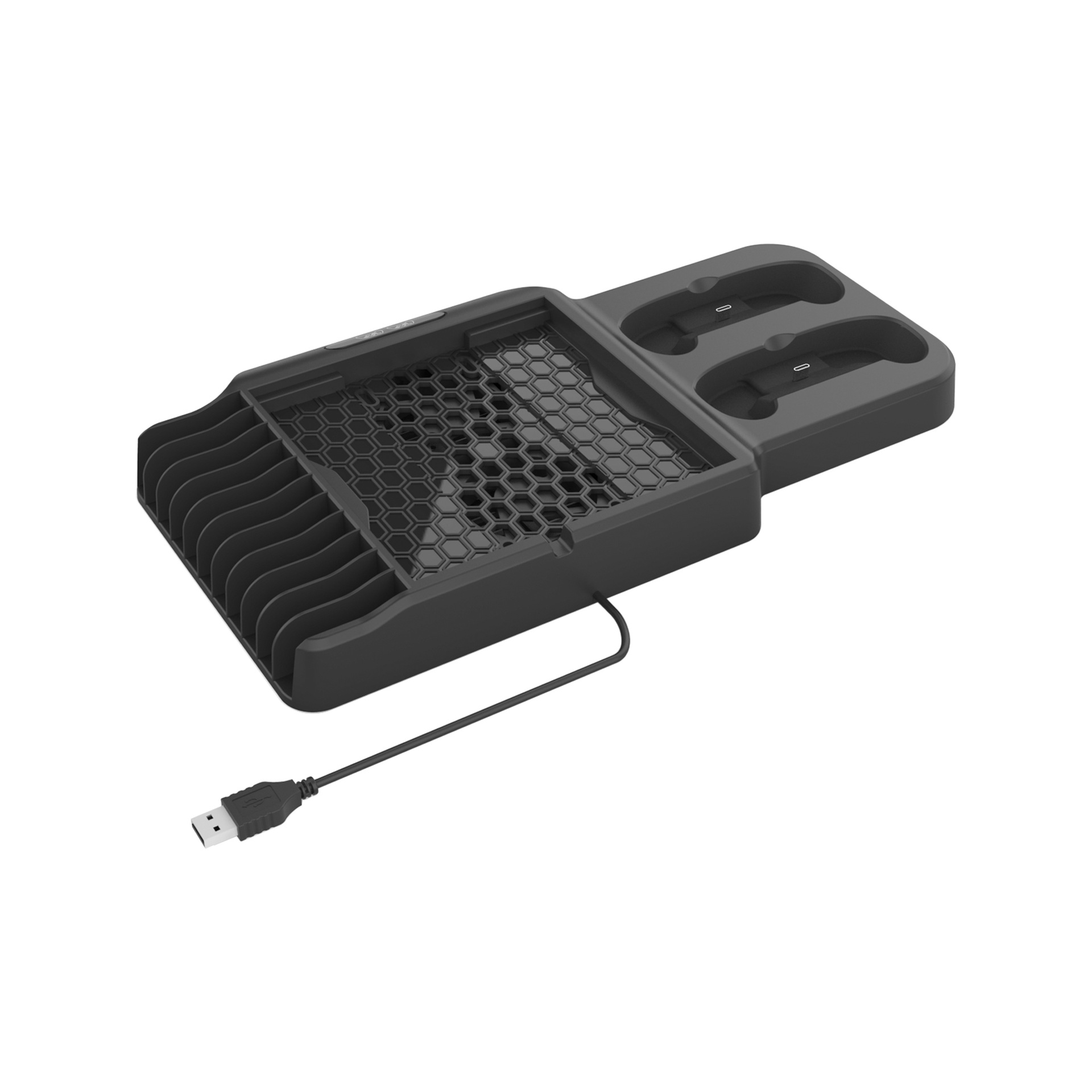
Xbox Series X Vertical Stand Cooling Fan,Xbox Series X Vertical Stand,Xbox Series X Cooling Fan Station,X- Series X Cooling Fan
Shenzhen GEME electronics Co,.Ltd , https://www.gemesz.com